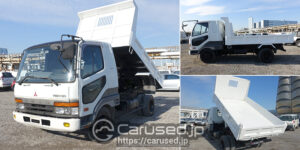In Europe, a lot of people prefer vehicles manufactured in their home country over cars from abroad. This is also the reason why Volkswagen sells best in Germany, Fiat is the leading brand in Italy, and Renault is the top car in France. It probably has something to do with patriotism and the tested reliability of their local vehicles.
However, after the free trade deal between Japan and the European Union was set in stone, more and more consumers in Europe have started to notice the impeccable quality of Japanese cars. While European vehicles continue to dominate the countries in that region, there are still some vehicles from Japan that are starting to make waves in select areas. In this article, we will discuss the models that have been gaining quite a significant following in Europe. If you’re thinking about getting a left hand drive car from Japan or you want an eco-friendlier vehicle, keep on reading this article and you’ll definitely find something useful for your needs.
Toyota Yaris
In Greece, Toyota Yaris took the top spot in the best-selling vehicles last 2017. Selling over 2,000 units, the Yaris overtook Peugeot which sold 1,791 units last year. Here are some notable features of the Yaris:
Pros
- Standard safety features include brake assist, seven airbags, ABS with EBD, and ISOFIX. Higher trims have hill-start assist, tire pressure warning, and front parking sensors, among other features.
- User-friendly and refined petrol engine. CVT option available right from the lowest variant.
- Spacious boot with folding rear seats. Ideal for families with plenty of luggage to carry.
- Offers sufficient comfort. Brilliantly manages high-speed undulations and bad roads.
Cons
- Poorly designed infotainment system which glares under harsh sunlight.
- No option for a diesel engine.
- Not very wide. It can’t comfortably carry three passengers in the back.
Suzuki Vitara
In Hungary, Suzuki Vitara took the top-selling spot last year with over 4,300 units sold. It overtook Skoda Octavia which sold 2,246 units in 2017. Here are some of the features you can expect from a Suzuki Vitara:
Pros
- Operating system that is relatively easy to use. The overall capacity and operation of a Vitara are impressive.
- Steering wheel designed with an audio control, making the whole trip more entertaining.
- Manual transmission shifts in a smooth manner, ensuring a better driving experience in the long run.
Cons
- Back door has a tendency to become loose, swinging easily.
- While it is adjustable, the driver’s seat can become too loose.
- There’s additional space in the back seat, but the compartment can be limited.
Nissan Leaf
Volkswagen Golf might have taken over the top spot in Norway a few years back, but last year, it was overtaken by the Nissan Leaf, with 3,995 units sold. If you’re thinking about importing a used Nissan Leaf, looking at the features below would help you decide:
Pros
- Using renewable energy, the Nissan Leaf is an eco-friendly vehicle.
- Lower insurance premiums due to its EV makeup.
- Little change of mechanical failure due to the few moving parts.
- Spacious, comfortable, and quiet.
Cons
- Power source can be unreliable, making it inefficient for longer trips.
- It won’t fee your hunger for speed.
- Not enough charging stations throughout Europe.
Get Your Own Japanese Car!
At Carused.jp, we export vehicles to several countries around the world. If you are thinking of getting a left hand drive car from Japan, do not hesitate to give us a call. We will guide you throughout the process—from the selection of vehicle down to the necessary paperwork and shipping arrangements. Trust that we will make the process easy and hassle-free for you.
Contact Carused.jp today to import a used Japanese car to Europe!



